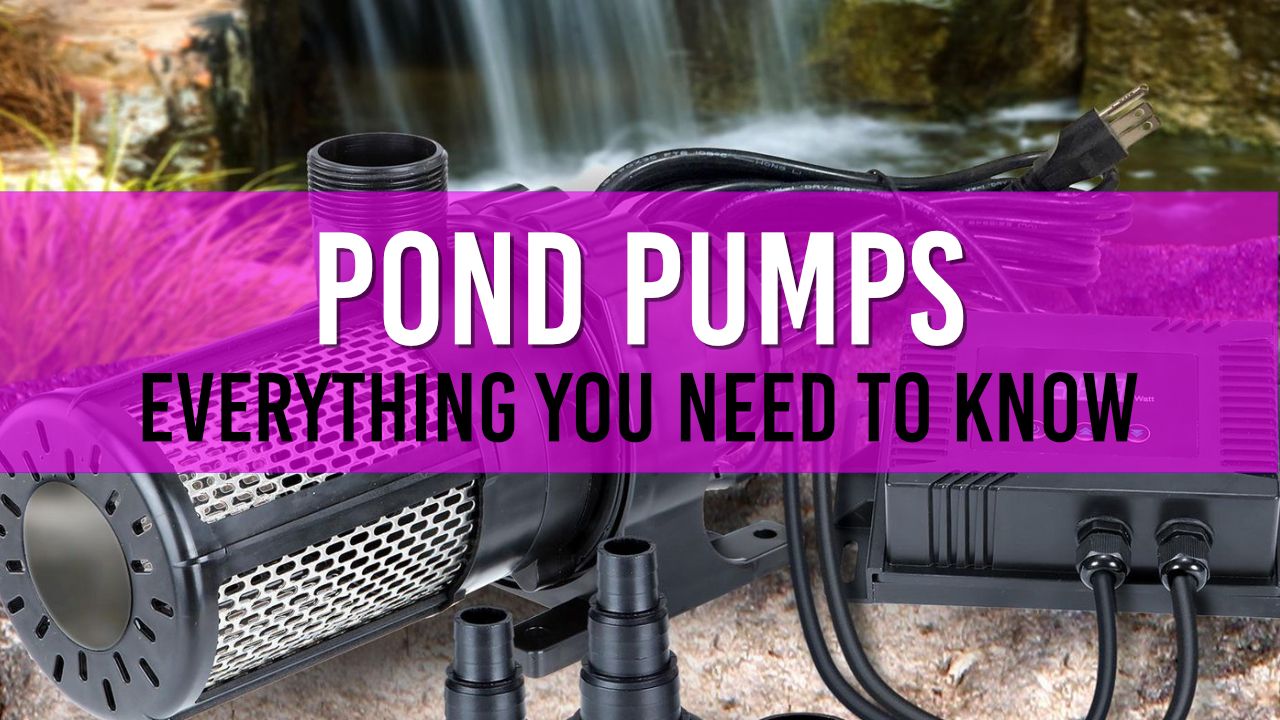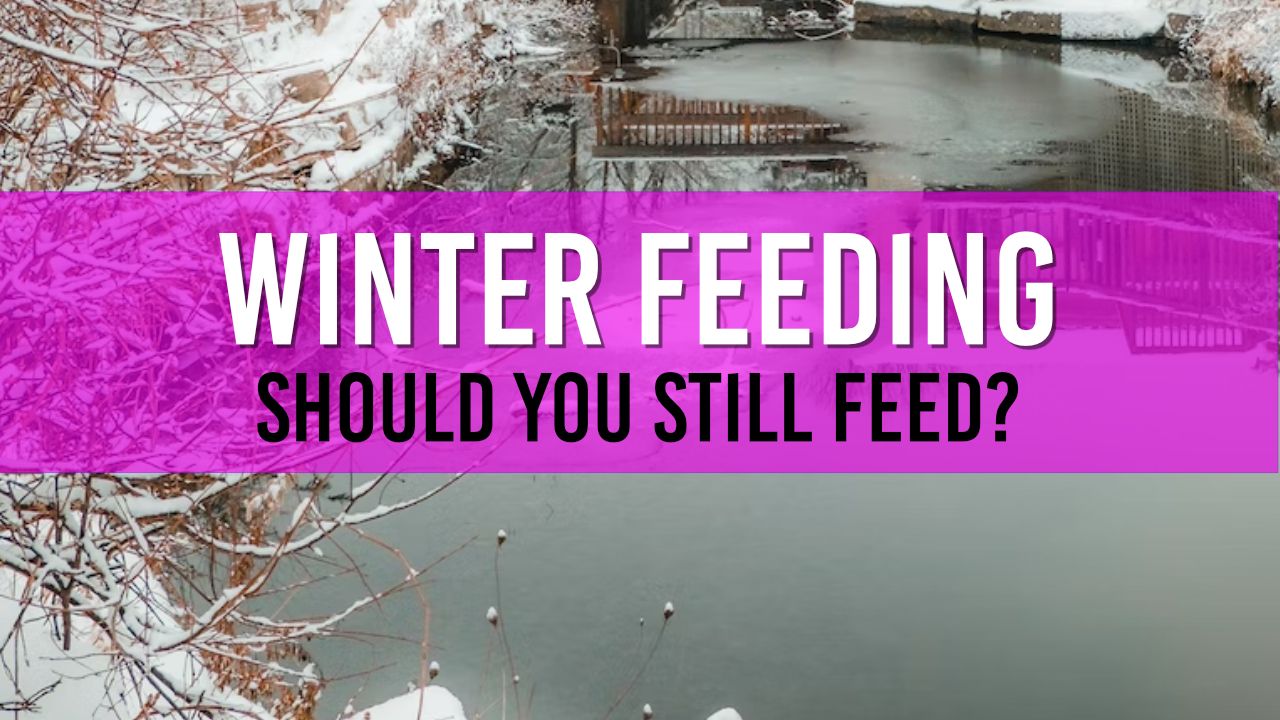Pond Pumps - Everything you need to know
In this article I will cover every aspect of Garden Pond Pumps. Your Pond Pump is like the heart of your pond - it ensures that the water is oxygenated and in most cases pushed to your filter boxes for a clean and healthy pond.

Table of Contents
I've wanted to write this guide for so long and recently had the time to do so. In this article I will break down all different aspects about pond pumps, what they are, what they do, what the different types of pumps are and answer some common questions that get asked by beginner and even experienced pond owners.
This article will keep growing over time, so if you feel I've missed a question, please be sure to leave a comment below or contact me.
What is a Pond Pump?
A pond pump is a device that helps to keep the water in your pond clean and healthy. It works by circulating the water, filtering out debris and harmful substances, and providing oxygen to the fish and other aquatic life.
Pond pumps come in different sizes and flow rates, depending on the size of your pond and the type of fish and plants you have.
Should You Leave Pond Pump On All the Time?
Yes, it is recommended to leave your pond pump on all the time. Pond pumps not only help to circulate and filter the water, but they also help to provide oxygen to the aquatic life in the pond. By leaving the pump on continuously, you can ensure that the water is constantly being filtered and aerated, which can help to prevent algae growth, reduce the risk of disease, and keep your fish and plants healthy.
Turning the pump on and off frequently can cause unnecessary wear and tear on the motor, reducing its lifespan.
Can a pump be too strong/powerful for a pond?
Yes, a pump can be too strong for a pond. The size of the pond and the flow rate of the pump should be properly matched to ensure optimal circulation and filtration of the water.
If the pump is too powerful for the size of the pond, it can create strong currents that may be harmful to the fish and other aquatic life. Strong currents can also stir up debris and sediment, making the water cloudy and reducing visibility.
A pump that is too strong/powerful can cause excessive water loss due to splashing and will prevent your Pond Lilies from flowering.
What are the different categories of pond pumps?
Pond Pumps are divided into 2 main categories:
- Submersible pumps
- External pumps
What are Submersible Pond pumps?
Submersible pumps (or in-water pumps) are placed directly in the pond and are designed to operate while completely submerged. Submersible pond pumps are the most popular type of pond pump.
What are External Pond Pumps?
External pumps are located outside of the pond and require an intake hose and discharge pipe to circulate the water. Whilst usually costing more, external pond pumps are easier to access and therefore to maintain and are often found on much larger ponds.
What are the different types of Pond Pumps?
Pond pumps come in different types and sizes, each designed to serve a specific purpose. The most common types of pond pumps include all-in-one pond pumps, fountain pumps, filter pumps, and variable flow pond pumps.
What are All-In-One Pond Pumps?
All-in-one pond pumps are a convenient and efficient option for small ponds or water features. These pumps typically include a built-in fountain or waterfall feature, a filter, and a pump all in one unit.
All-In-One pumps are also bundled into the same category as "Filter Pumps" as many contain filter media within the pump itself.
This means that the water is both filtered and circulated, providing both aesthetic and functional benefits.
What are Fountain Pumps?
Fountain pumps are specifically designed to create decorative water features in your pond or water garden. Easy to install and powered by either Solar or Mains Power, they often include interchangeable nozzles for customised fountain spray patterns and adjustable flow rates allowing for different fountain heights.
What are Filter Pumps
Filter pumps are often bundled together with "All-in-One" pumps as some contain filter sponges to help keep your pond water clear.
Filter pumps may not include any filter media and their main purpose is to suck water from your pond and send to an external filter box for cleaning.
I don't have a separate filter box
Choose a filter pump that contains filter sponges and other filtration media
I do have a separate filter box
Choose a filter pump that does not come with filter sponges. For optimal results also choose a filter pump that comes with either a pump net, or pump cage which prevents debris clogging your pump.
What are Variable Flow Pond Pumps?
Variable flow pond pumps are a type of pond pump that allow you to adjust the flow rate of the water. Variable flow pumps are designed to be used with external pond filters.
Variable flow pumps offer several benefits, including:
- Control your Pond Pump Running Costs
- Control the speed of your water features such as Pond Waterfalls
What size pump do I need for my pond?
You should always ensure that at least half of your pond water is cycled every hour. See the table below to easily identify which size pump you need for your pond.
| POND CAPACITY (LITRES) | MINIMUM SIZE PUMP REQUIRED |
|---|---|
| 500L Pond | 250lph Pump Required |
| 750L Pond | 375lph Pump Required |
| 1000L Pond | 500lph Pump Required |
| 1250L Pond | 625lph Pump Required |
| 1500L Pond | 750lph Pump Required |
| 1750L Pond | 875lph Pump Required |
| 2000L Pond | 1000lph Pump Required |
| 2250L Pond | 1125lph Pump Required |
| 2500L Pond | 1250lph Pump Required |
| 2750L Pond | 1375lph Pump Required |
| 3000L Pond | 1500lph Pump Required |
| 3250L Pond | 1625lph Pump Required |
| 3500L Pond | 1750lph Pump Required |
| 3750L Pond | 1875lph Pump Required |
| 4000L Pond | 2000lph Pump Required |
| 4250L Pond | 2125lph Pump Required |
| 4500L Pond | 2250lph Pump Required |
| 4750L Pond | 2375lph Pump Required |
| 5000L Pond | 2500lph Pump Required |
How often should the water turn over in a pond?
Your entire pond water should be "turned over" (or cycled as it's also known) every 2 hours to ensure a clean and healthy environment for your fish, frogs and other pond plants. Use the table above to ensure you purchase the right pump for your pond.

Can I use a larger pump for a smaller pond?
Yes, providing your pond water is at least completely cycled every 2 hours larger capacity/flow pumps can be used in smaller ponds.
Will a pond pump keep the water clear?
While a pond pump can help to keep the water circulating and oxygenated, it is not enough to keep the water clear without a filter. All-In-One pond pumps can help keep you water clear for smaller low stocked fish ponds, but long term success will require a separate filtration system.
A pond filter is essential for removing debris and harmful substances from the water, such as fish waste, uneaten food, and other organic matter.
Can a Solar Powered Pond Pump replace my mains powered Pond Pump?
Solar-powered pumps rely on sunlight to generate energy, which means they may not operate at full capacity on cloudy days or during the winter months with limited sunlight.
Solar Powered pumps are not as powerful as mains powered pumps meaning their ability to cycle your pond water is limited resulting in unhealthy water for all aquatic life.
Where's the best position for a Pond Pump?
Pond Pumps should always be positioned furthest away from your return water. For example, if your waterfall is on the right hand side of your pond, your pond pump should be placed on the left hand side of the pond as per the graphic below.

Do I need to raise my pond pump in the summer or winter?
During the summer months (warmer weather) your pond pump should be placed at the lowest part of your pond.
During the Winter months (colder weather) your pond pump should be moved to a higher position in your pond such as shelves, or on bricks,
I wind down for Summer and raise my thermostat for Winter...
(silly, but it helps me)
Should you turn your Pond Pump off in Winter?
You should not turn off your main pond pump during the winter months as this can prevent your pond water being a healthy environment for your fish. Non-essential pond pumps such as fountain/water feature pumps can be turned off to prevent damage due to ice.

What type of pump is best to drain a pond?
Any submersible pump that has an outflow pipe will be more than adequate to drain your pond. Yes, you can purchase specific pumps for draining ponds, but I personally redirect my filter flow to a pipe that leads to a drain.
Are Eco-Pond Pumps any good?
A high quality Eco-Pond Pump will more than cope with many garden ponds. I recently wrote an article about how I saved £200 on my pond running costs by replacing both my Pond Pump and air Pump with eco-friendly versions.
How long should a pond pump run before adding fish?
A pond pump should be running for at least 24 hours continuously before adding new fish to your pond. To ensure the water is safe for your fish, use Pond Water Test Kits to check for pH, ammonia, nitrite, and nitrate levels.
Dechlorinators are often called "Tap Safe", but ensure you purchase a large enough bottle to treat your entire pond water.
Can fish live in a pond without a pump?
Fish such as Goldfish, Koi, Orfe etc "can" technically live in a pond without a pump - however it is not advisable. Pond Pumps and Filters ensure your pond water remains health and any old food or harmful materials are removed.
Does running water oxygenate a pond?
Running Water provided by a Pond Pump will oxygenate the water ensuring your fish and other aquatic life are able to breath and survive.
How often do I need to clean my Pond Pump?
To ensure maximum efficiency, your Pond Pumps should be inspected at least every 2 weeks for debris. If your waterfall or water feature has slowed down, this is a sign that your pond pump will need cleaning.
Final Thoughts about Pond Pumps
I hope this article has somewhat helped you understand the important role that pond pumps play in any Pond eco-system. It's true that one size does not fit all and you should always do as much research as possible when deciding on the type of pond pump you require for your garden and always ensure that you purchase a pump which is powerful enough to cycle your water every 2 hours.
I did write an article about the different pond pumps you can buy if you want to and check that out below.



